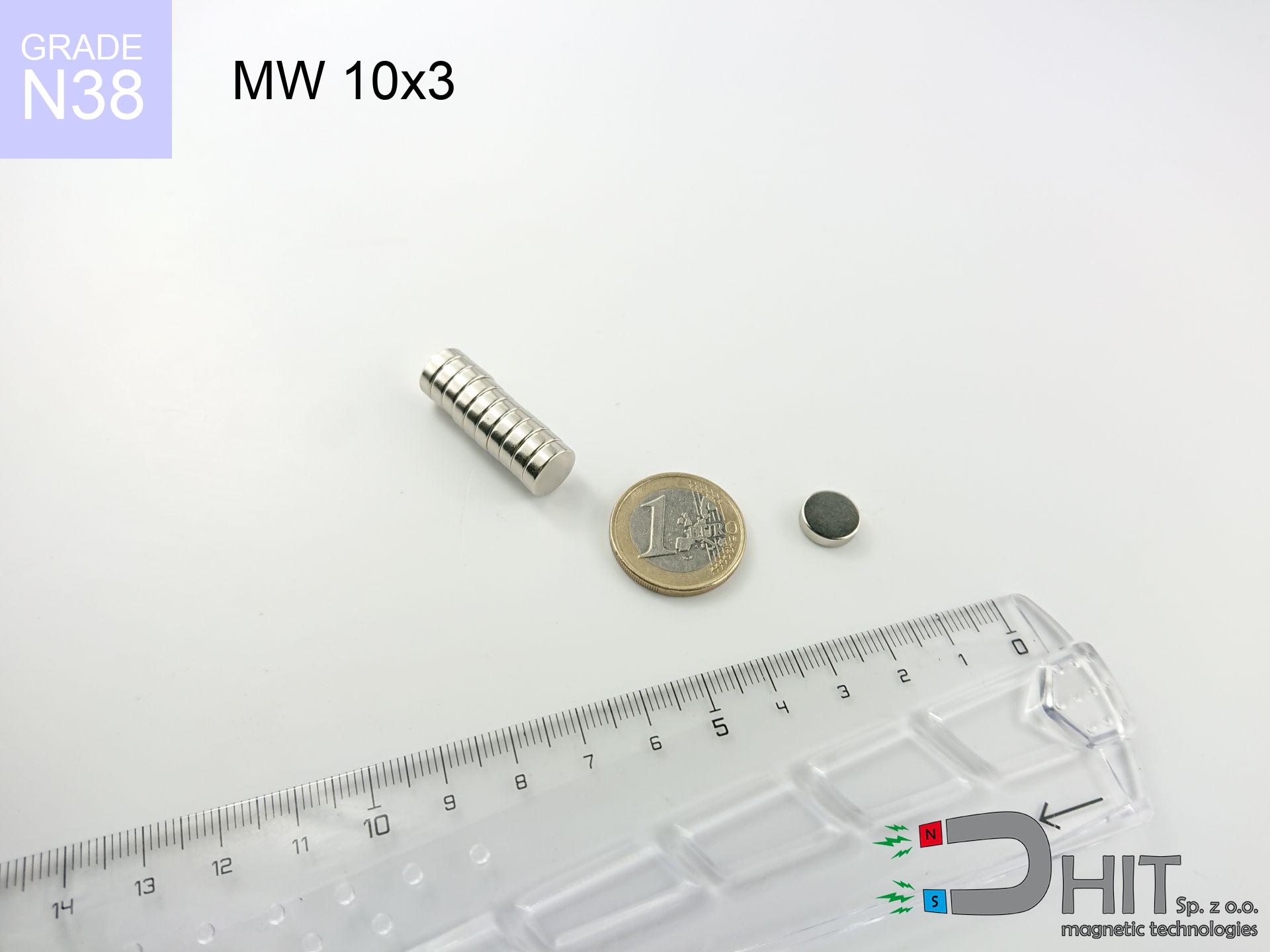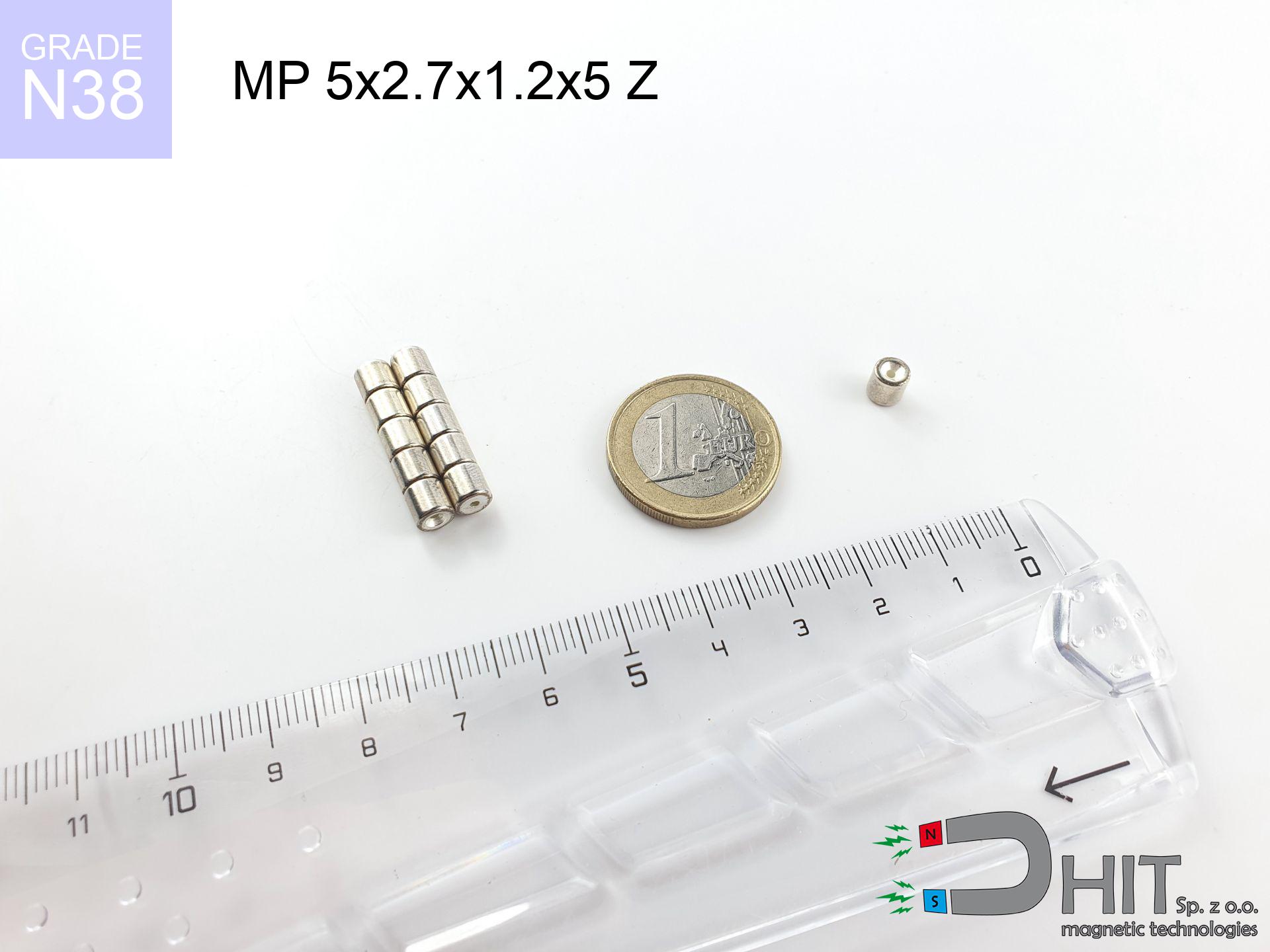SM 25x250 [2xM8] / N42 - magnetic separator
magnetic separator
Catalog no 130293
GTIN/EAN: 5906301812869
Diameter Ø
25 mm [±1 mm]
Height
250 mm [±1 mm]
Weight
960 g
Magnetic Flux
~ 6 500 Gauss [±5%]
688.80 ZŁ with VAT / pcs + price for transport
560.00 ZŁ net + 23% VAT / pcs
bulk discounts:
Need more?
Pick up the phone and ask
+48 888 99 98 98
alternatively send us a note through
contact form
the contact section.
Parameters as well as shape of magnetic components can be verified on our
force calculator.
Same-day processing for orders placed before 14:00.
Technical of the product - SM 25x250 [2xM8] / N42 - magnetic separator
Specification / characteristics - SM 25x250 [2xM8] / N42 - magnetic separator
| properties | values |
|---|---|
| Cat. no. | 130293 |
| GTIN/EAN | 5906301812869 |
| Production/Distribution | Dhit sp. z o.o. |
| Country of origin | Poland / China / Germany |
| Customs code | 85059029 |
| Diameter Ø | 25 mm [±1 mm] |
| Height | 250 mm [±1 mm] |
| Weight | 960 g |
| Material Type | Stainless steel AISI 304 / A2 |
| Magnetic Flux | ~ 6 500 Gauss [±5%] |
| Size/Mount Quantity | 2xM8 |
| Polarity | circumferential - 9 poles |
| Casing Tube Thickness | 1 mm |
| Manufacturing Tolerance | ±1 mm |
Magnetic properties of material N42
| properties | values | units |
|---|---|---|
| remenance Br [min. - max.] ? | 12.9-13.2 | kGs |
| remenance Br [min. - max.] ? | 1290-1320 | mT |
| coercivity bHc ? | 10.8-12.0 | kOe |
| coercivity bHc ? | 860-955 | kA/m |
| actual internal force iHc | ≥ 12 | kOe |
| actual internal force iHc | ≥ 955 | kA/m |
| energy density [min. - max.] ? | 40-42 | BH max MGOe |
| energy density [min. - max.] ? | 318-334 | BH max KJ/m |
| max. temperature ? | ≤ 80 | °C |
Physical properties of sintered neodymium magnets Nd2Fe14B at 20°C
| properties | values | units |
|---|---|---|
| Vickers hardness | ≥550 | Hv |
| Density | ≥7.4 | g/cm3 |
| Curie Temperature TC | 312 - 380 | °C |
| Curie Temperature TF | 593 - 716 | °F |
| Specific resistance | 150 | μΩ⋅cm |
| Bending strength | 250 | MPa |
| Compressive strength | 1000~1100 | MPa |
| Thermal expansion parallel (∥) to orientation (M) | (3-4) x 10-6 | °C-1 |
| Thermal expansion perpendicular (⊥) to orientation (M) | -(1-3) x 10-6 | °C-1 |
| Young's modulus | 1.7 x 104 | kg/mm² |
Table 1: Rod construction
SM 25x250 [2xM8] / N42
| Parameter | Value | Description / Unit |
|---|---|---|
| Diameter (Ø) | 25 | mm |
| Total length | 250 | mm (L) |
| Active length | 214 | mm |
| Section count | 9 | modules |
| Dead zone | 36 | mm (2x 18mm starter) |
| Weight (est.) | ~933 | g |
| Active area | 168 | cm² (Area) |
| Housing material | AISI 304 | 1.4301 (Inox) |
| Surface finish | Ra < 0.8 µm | Polished |
| Temp. class | 80°C | Standard (N) |
| Force loss (at max °C) | -12.8% | Reversible loss (physics) |
| Force (calculated) | 10.6 | kg (theor.) |
| Induction (surface) | ~6 500 | Gauss (Max) |
Chart 2: Field profile (9 sections)
Chart 3: Temperature performance
Material specification
| iron (Fe) | 64% – 68% |
| neodymium (Nd) | 29% – 32% |
| boron (B) | 1.1% – 1.2% |
| dysprosium (Dy) | 0.5% – 2.0% |
| coating (Ni-Cu-Ni) | < 0.05% |
Ecology and recycling (GPSR)
| recyclability (EoL) | 100% |
| recycled raw materials | ~10% (pre-cons) |
| carbon footprint | low / zredukowany |
| waste code (EWC) | 16 02 16 |
Other proposals
Strengths as well as weaknesses of rare earth magnets.
Strengths
- They retain attractive force for almost 10 years – the loss is just ~1% (based on simulations),
- Magnets perfectly resist against loss of magnetization caused by foreign field sources,
- Thanks to the shiny finish, the surface of nickel, gold-plated, or silver gives an aesthetic appearance,
- Neodymium magnets create maximum magnetic induction on a small area, which increases force concentration,
- Made from properly selected components, these magnets show impressive resistance to high heat, enabling them to function (depending on their form) at temperatures up to 230°C and above...
- Due to the ability of flexible forming and customization to specialized needs, magnetic components can be created in a variety of forms and dimensions, which makes them more universal,
- Wide application in future technologies – they are used in computer drives, electric drive systems, diagnostic systems, and complex engineering applications.
- Thanks to their power density, small magnets offer high operating force, with minimal size,
Disadvantages
- At strong impacts they can break, therefore we advise placing them in special holders. A metal housing provides additional protection against damage, as well as increases the magnet's durability.
- When exposed to high temperature, neodymium magnets experience a drop in force. Often, when the temperature exceeds 80°C, their strength decreases (depending on the size and shape of the magnet). For those who need magnets for extreme conditions, we offer [AH] versions withstanding up to 230°C
- Magnets exposed to a humid environment can corrode. Therefore while using outdoors, we suggest using waterproof magnets made of rubber, plastic or other material resistant to moisture
- Limited ability of creating nuts in the magnet and complex shapes - recommended is casing - magnet mounting.
- Health risk resulting from small fragments of magnets pose a threat, if swallowed, which gains importance in the context of child safety. It is also worth noting that small components of these magnets can disrupt the diagnostic process medical in case of swallowing.
- Higher cost of purchase is a significant factor to consider compared to ceramic magnets, especially in budget applications
Pull force analysis
Magnetic strength at its maximum – what contributes to it?
- with the contact of a sheet made of special test steel, guaranteeing maximum field concentration
- with a cross-section minimum 10 mm
- with an polished contact surface
- under conditions of ideal adhesion (metal-to-metal)
- for force acting at a right angle (pull-off, not shear)
- at ambient temperature approx. 20 degrees Celsius
Practical lifting capacity: influencing factors
- Distance (between the magnet and the metal), because even a tiny distance (e.g. 0.5 mm) results in a reduction in lifting capacity by up to 50% (this also applies to varnish, rust or dirt).
- Direction of force – maximum parameter is available only during perpendicular pulling. The force required to slide of the magnet along the surface is standardly many times smaller (approx. 1/5 of the lifting capacity).
- Metal thickness – the thinner the sheet, the weaker the hold. Magnetic flux penetrates through instead of converting into lifting capacity.
- Plate material – low-carbon steel attracts best. Alloy steels lower magnetic properties and holding force.
- Smoothness – ideal contact is possible only on polished steel. Any scratches and bumps reduce the real contact area, reducing force.
- Thermal environment – temperature increase results in weakening of induction. It is worth remembering the thermal limit for a given model.
Lifting capacity testing was performed on plates with a smooth surface of optimal thickness, under a perpendicular pulling force, whereas under attempts to slide the magnet the load capacity is reduced by as much as fivefold. Moreover, even a small distance between the magnet’s surface and the plate decreases the lifting capacity.
Safe handling of NdFeB magnets
Electronic devices
Data protection: Neodymium magnets can ruin payment cards and delicate electronics (pacemakers, hearing aids, mechanical watches).
Heat sensitivity
Control the heat. Exposing the magnet to high heat will ruin its magnetic structure and strength.
Adults only
These products are not intended for children. Accidental ingestion of a few magnets can lead to them connecting inside the digestive tract, which poses a severe health hazard and necessitates immediate surgery.
Fire warning
Powder generated during machining of magnets is flammable. Avoid drilling into magnets without proper cooling and knowledge.
Finger safety
Danger of trauma: The pulling power is so great that it can result in hematomas, pinching, and even bone fractures. Use thick gloves.
Material brittleness
Despite metallic appearance, neodymium is delicate and cannot withstand shocks. Avoid impacts, as the magnet may shatter into sharp, dangerous pieces.
Medical implants
Health Alert: Neodymium magnets can turn off pacemakers and defibrillators. Do not approach if you have medical devices.
Immense force
Be careful. Neodymium magnets act from a distance and connect with massive power, often faster than you can react.
Sensitization to coating
Warning for allergy sufferers: The nickel-copper-nickel coating consists of nickel. If skin irritation happens, cease handling magnets and wear gloves.
Impact on smartphones
Navigation devices and smartphones are highly susceptible to magnetism. Direct contact with a powerful NdFeB magnet can decalibrate the internal compass in your phone.

![Separation magnetic rod SM 25x250 [2xM8] / N42 Separation magnetic rod SM 25x250 [2xM8] / N42](https://cdn3.dhit.pl/graphics/banners/magnet.webp)
![SM 25x250 [2xM8] / N42 - magnetic separator](https://cdn3.dhit.pl/graphics/products/sm-25x250-2xm8-ker.jpg)


![UMH 48x11x65 [M6] / N38 - magnetic holder with hook UMH 48x11x65 [M6] / N38 - magnetic holder with hook](https://cdn3.dhit.pl/graphics/products/umh-48x11x65-m6-wiw.jpg)


